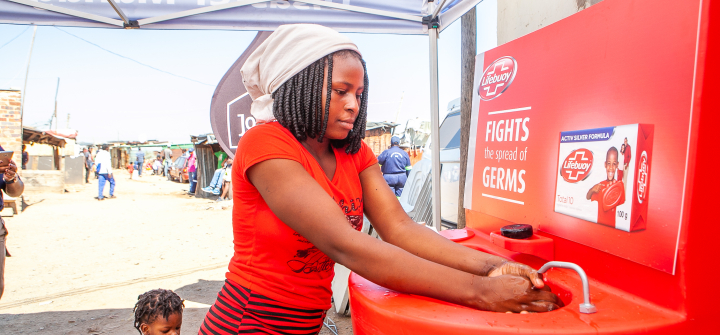Public Trust Can Make or Break Government Response to Public Health Crisis
The strength of people’s trust in their health leaders can determine how a country will fare in a pandemic. From the COVID-19 pandemic to the Ebola epidemic to the reemergence of monkeypox as a public health emergency, such trust has been low.
Despite the incredible speed with which epidemiologists offered strategies to slow the spread of SARS-CoV-2, and the unprecedented development of a COVID-19 vaccine, more than 6 million people have died. Mistrust in public institutions and inconsistent leadership fueled misinformation and disinformation. Early in the pandemic, this led to poor adherence to public health guidance. Later, it led to low vaccination rates and inappropriate use of available treatments.
We needed better integration of social and behavioral science in our policy recommendations.
We developed a replicable model, outlined in a paper for the British Medical Journal earlier this year, to help policymakers use behavioral insights in their response to disease threats. Our model enabled effective policy responses based on evidence that public trust in institutions can serve as a powerful agent for action.
The data comes from the Partnership for Evidence-Based Response to COVID-19, a public–private partnership between the Africa CDC, WHO, Vital Strategies, and Resolve to Save Lives. PERC surveyed 21,000+ people in 18 countries in Africa 4 times over 18-months to maintain fresh insights on public attitudes and behaviors related to COVID-19, providing behavioral insights to guide policymaking.
We found that people were more likely to take protective actions like washing hands and wearing masks if they trusted their health institutions and government leaders. Trust also affected responses to arduous community-level behaviors, such as adhering to public place closures. Our findings are consistent with a recent analysis of COVID-19 suggesting that with greater trust, the world may have experienced up to 13% fewer infections.
We also found that self-efficacy, or confidence in one’s ability to protect their health, was an important determinant of action. It suggests that policymakers must engage communities and build public confidence — for example, by teaching proper handwashing techniques or making available facilities for handwashing — to follow recommended health actions. Our study also notes how behaviors recommended by public health experts can carry a burden. During the pandemic, many people faced an impossible choice: stay home safe from illness or leave home to provide for the family. Public health measures must be weighed against public perception of risk, and guidance from the government or other trusted messengers must be evidence-based, feasible, and accompanied by relief measures (such as food assistance to allow people to stay home from work).
Policymakers must recognize—and invest in understanding—the varied influences on people’s health decisions, which are rooted not only in knowledge of a disease, but rather, a complex interplay of factors—structural, social, economic, and interpersonal.
We offer 5 recommendations:
- Utilize all of the science. Effective response requires monitoring how diseases impact and spread in the community. Integration of behavioral science expertise is key to effective policies.
- Integrate diverse data streams. Social data may come from a variety of sources that include rigorous surveys or dipstick (exploratory) methods. Build systems like PERC to generate, integrate, and monitor diverse social behavioral data with epidemiologic and other health system data.
- Respond to misinformation. Viral misinformation can be as dangerous as the emergence of a new virus—undermining confidence in science, vaccines, and treatments. Continuous behavioral monitoring systems like PERC can identify misinformation as it is sowed. Rapid, frequent, and accurate messaging voiced by trusted public health sources can then counter and limit its spread.
- Build trust in local systems and health institutions to detect health threats early and increase the likelihood of community cooperation. Invest in understanding how people experience their local institutions as well as strong communication and community engagement strategies.
- Prepare integrated response systems before a crisis. Models for institutionalizing behavioral insights in public health systems already exist in countries as varied as Australia, Singapore, Peru, and Kenya; PERC offers a model for public-private partnership in resource-constrained settings.
Our data illustrate the crucial role that strong and trusted public institutions play in a crisis. As the world prepares to deal with future pandemics, using the lessons of the behavioral sciences can avert unnecessary social and economic disruption, and prevent the needless loss of lives.
Nandita Murukutla, PhD, is vice president, Global Policy and Research, Vital Strategies.
Amanda McClelland, MPH, is senior vice president, Prevent Epidemics, Resolve to Save Lives.
Join the 50,000+ subscribers in 170+ countries who rely on Global Health NOW summaries and exclusive articles for the latest public health news. Sign up for our free weekday newsletter, and please share the link with friends and colleagues.
Mayor Geoffrey Makhubo launched a handwashing campaign to counter the spread of COVID-19 at the Mangolongolo Informal Settlement, April 22, 2020, Johannesburg, South Africa. Image: Sharon Seretlo/Gallo Images via Getty






